Zhuguanlong Township in Shouning County, Fujian Province of China, where the Tea Leaf Market is located, was a tea-rich but poverty-stricken region with vast tea fields and moso bamboo forest on its mountains.
To boost local tea leaf trading economy, the government and villagers proposed a multi-functional tea leaf market near a bus stop. It could also provide the villagers with a quality public space for gathering, leisure activities, and sharing business opportunities.


As a result, a big open space with a large span was built with local materials, craftsmen and building technologies. It could be flexibly used throughout the year with low maintenance costs. Apart from seasonal tea leaf trading, it can serve multiple public purposes. (farm produce trading, festival celebrations, weddings, funerals, outdoor film projection, and children activities)


Traditional building technologies for wooden arch bridges (Traditional design and practices for building Chinese wooden arch bridges) have been carried forward since ancient times in Shouning County, (which is listed in the UNESCO’s Intangible cultural heritage) with 19 wooden arch bridges preserved till now. Shouning County is one of inheritance regions of wooden arch bridge building technologies and abounds in moso bamboo. We studied the prototype and traditional building technologies of wooden woven arches, and proposed refined bamboo structures (Load tests were carried out to determine the structure’s maximum bearing capacity), and overlapped easily obtained small bamboo parts, which served as substitute for timber ones (Bamboo is more light-weighted and easier to process than wood), to form identical units that were finally assembled into a woven bamboo roof with an 18-meter span. A roof has a smaller load than a bridge with an identical span).
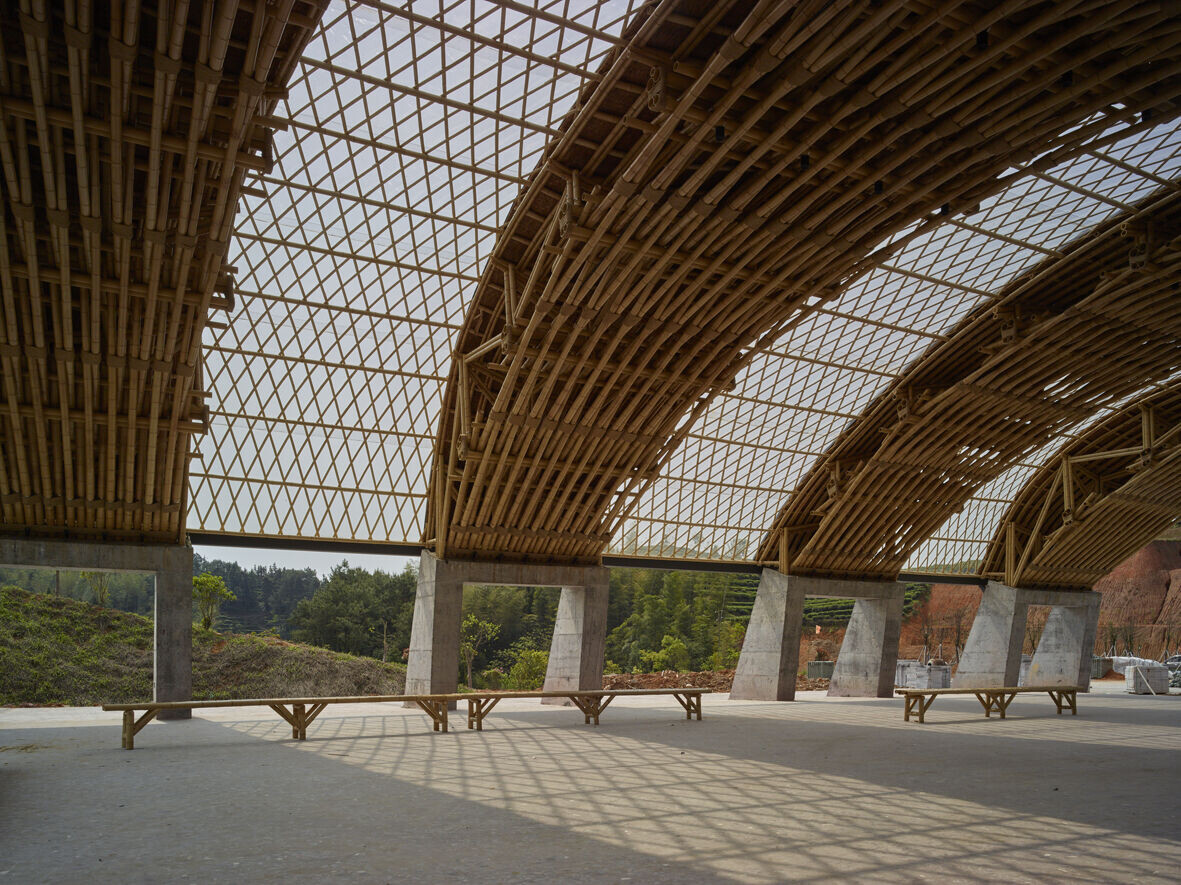
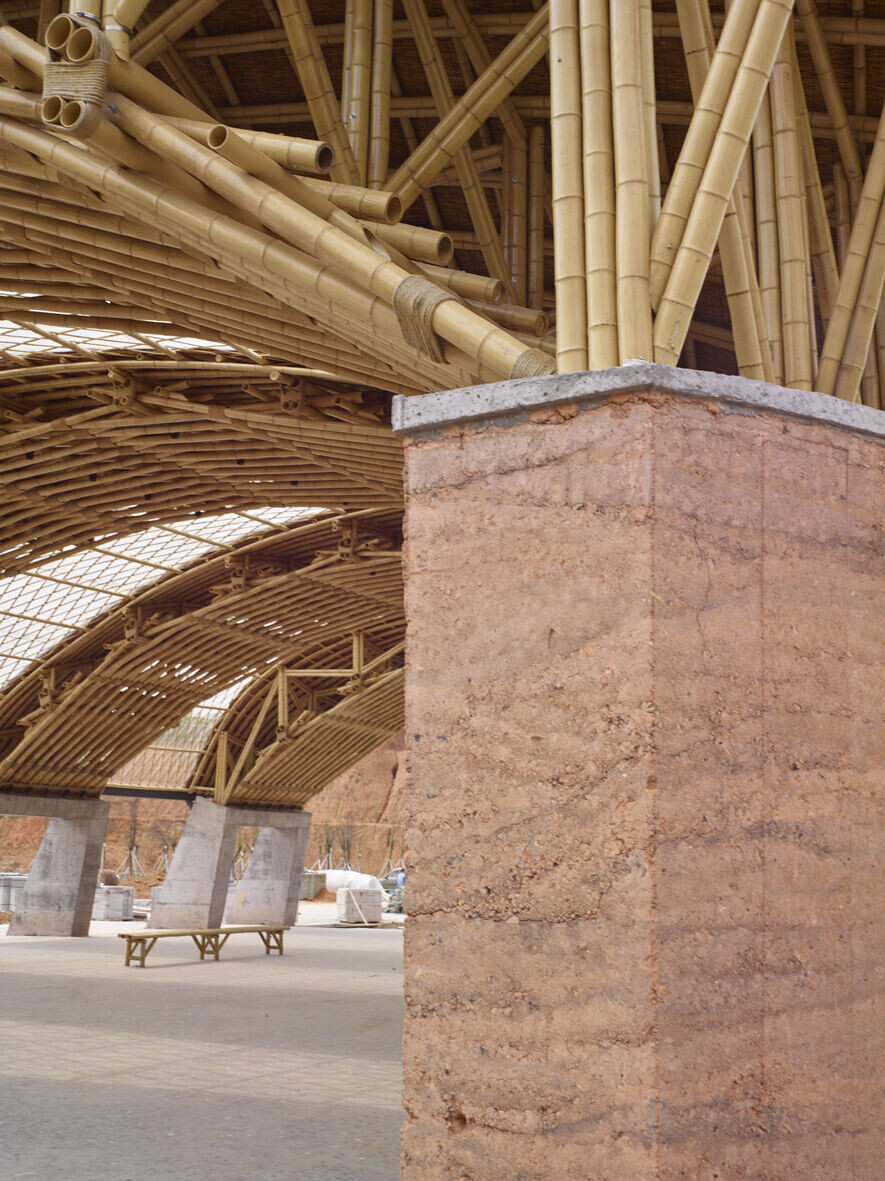
Since many villagers were well trained for rammed earth buildings, which were common in the region (Tulou, a sort of earth building in Fujian Province, is built with traditional earth-ramming technologies and listed as World Cultural Heritage), an enclosure wall was built around the reinforced concrete structure at the building’s north side, where traditional earth-ramming technologies were applied. It served as both a cover for the main structure and a theme-wall and screen between the exterior and interior.
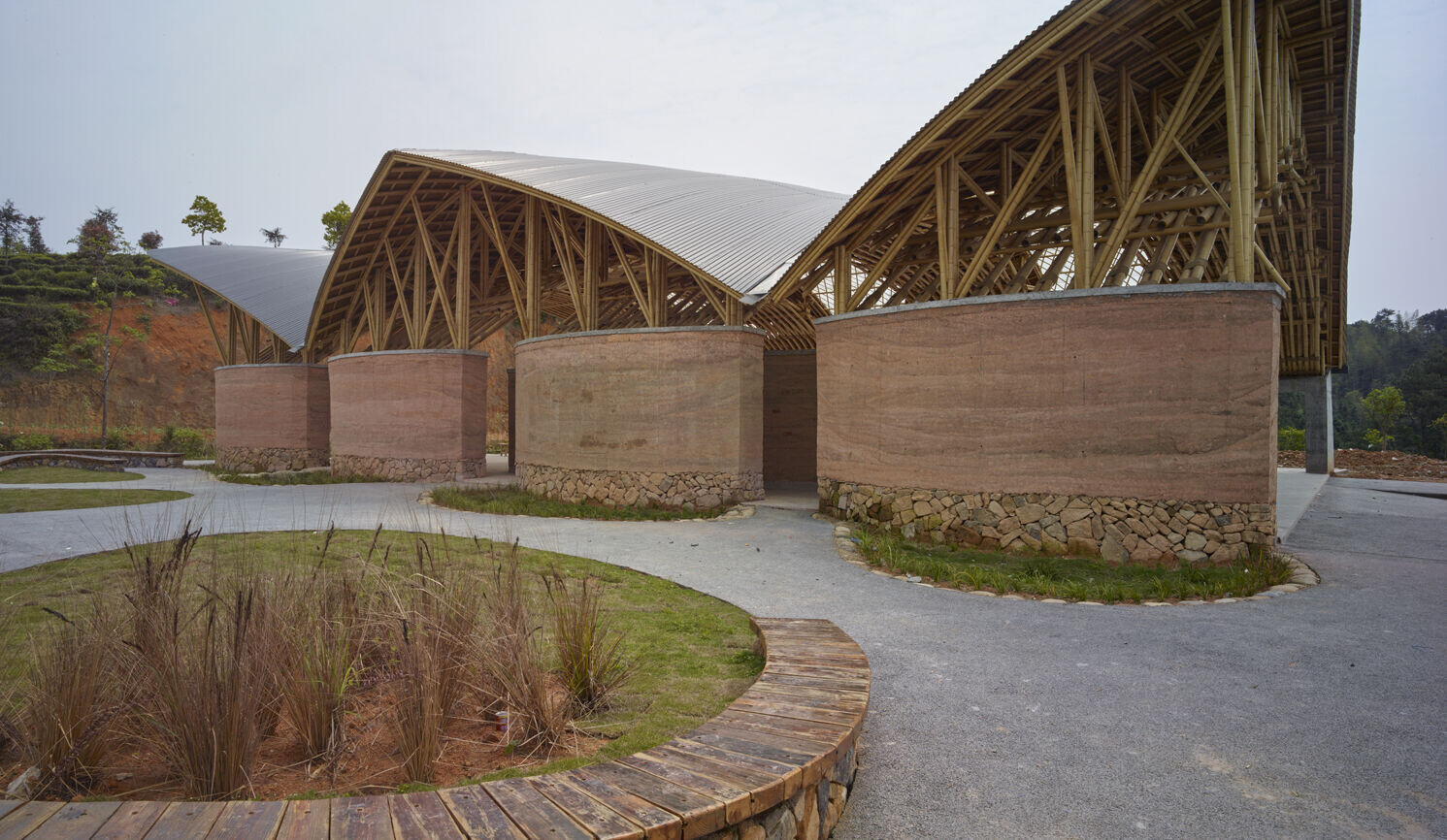

Waste was turned into wealth.
Discarded materials around the site were recycled, processed and re-utilized by local craftsmen. Going through a whole process of collecting waste materials:1. Rubble retrieved from demolished houses’ foundations; 2. Complete timber structural parts recycled from demolished dilapidated houses; 3. Leftovers from stone processing factories; 4. Discarded Shouning stone plates from pavement.), discussing and experimenting on their utilization with local craftsmen:1. Recycled rubble were directly applied to foundations for buildings or landscape walls; 2. Recycled timber parts were processed into timber bricks or timber units for benches; 3. Leftovers from stone plates were processed into small pavement parts; 4. Smaller leftovers were broken into bits as terrazzo aggregate, and applying them to the building, we finally reached the goal of obtaining materials within 20 kilometers of the site.
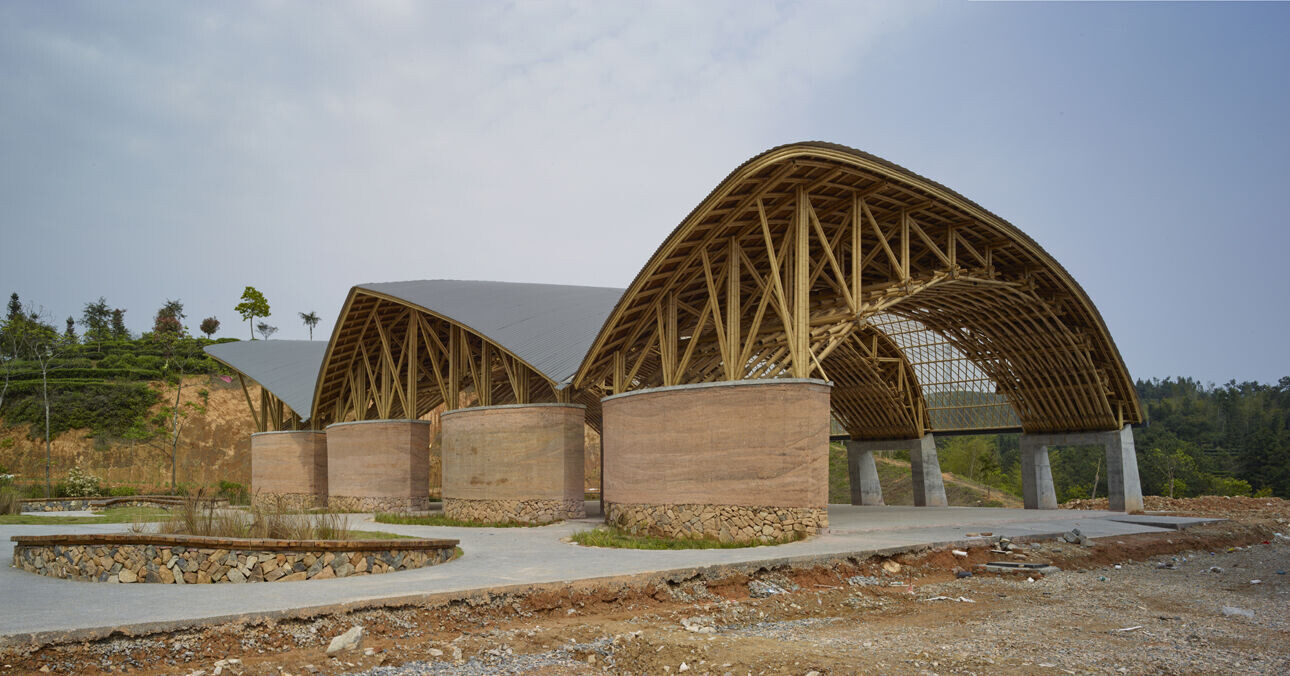
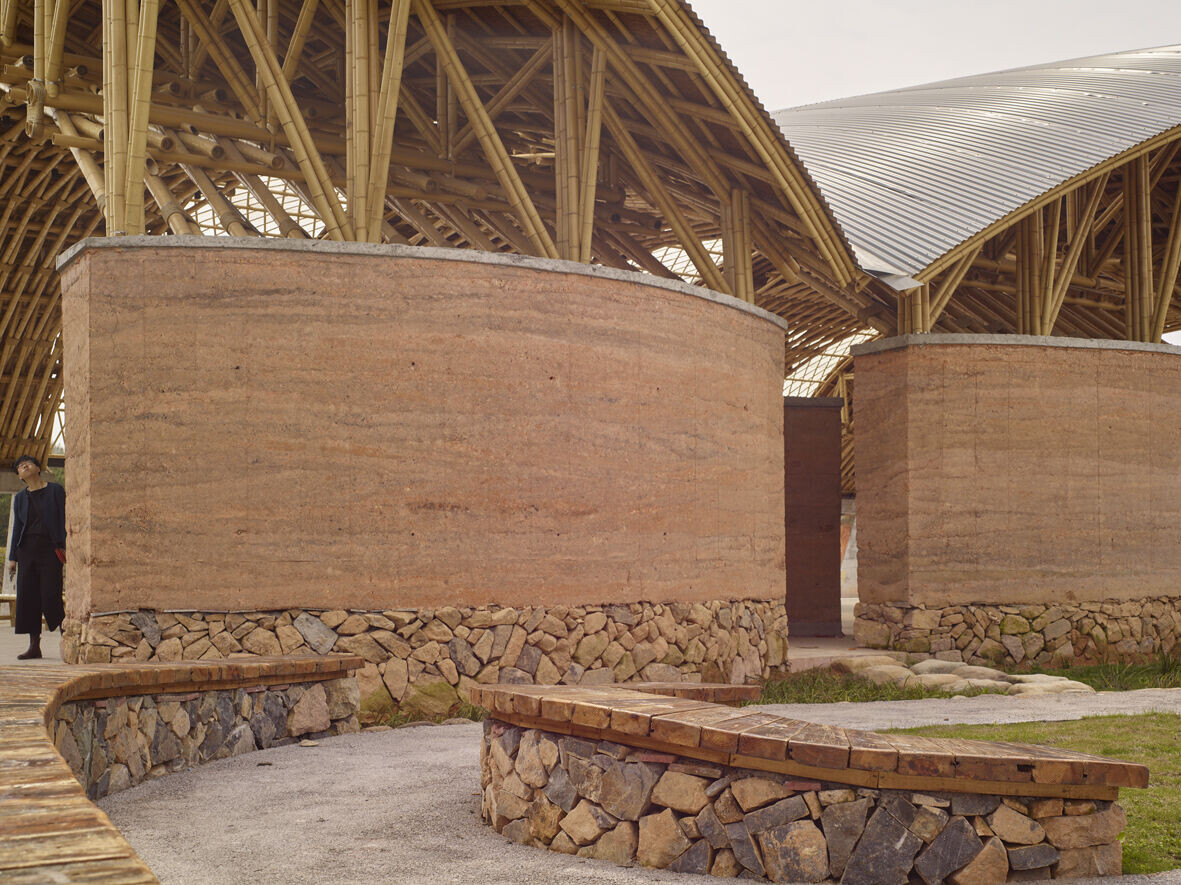
Considering the environmental and social status of this underdeveloped region, we made sure a low-cost process of material obtaining, participation of local craftsmen and involvement of local technologies were implemented, so that the building could be deeply rooted here like a tree growing out from its soil, thus motivating the villagers to participate in and benefit from its construction. The large span has made it possible to turn the market into the community’s activity space [where farm produce trading, villagers’ conference, extracurricular activities, weddings & funerals, weekend films can take place on non-tea leaf trading seasons. Here villagers can take a break from their farmland work; children can draw or play games; tea leaf can be sun-dried at the front square. An open roof could boost natural ventilation and daylighting, reducing operational costs. Against the backdrop of COVID-19 pandemic, it could be used for pandemic prevention coordination, nucleic tests and medical observation.


Long perceived as symbols of Chinese traditional culture, pavilions and towers are not necessarily enclosed; instead, quite a few of them are built with an open gesture, reflecting the concept of harmony between human and nature, which has been deeply rooted in Eastern culture. The tea leaf market, though serving as a shelter against storms, features openness, too. The rammed earth walls, concrete structures and terrazzo floors are put together to present a sort of natural solidness while indicating the human-nature harmony. The metal roof built with modern technologies is joint seamlessly with the light bamboo structure, guaranteeing both durability and climatic adaptability of the building.
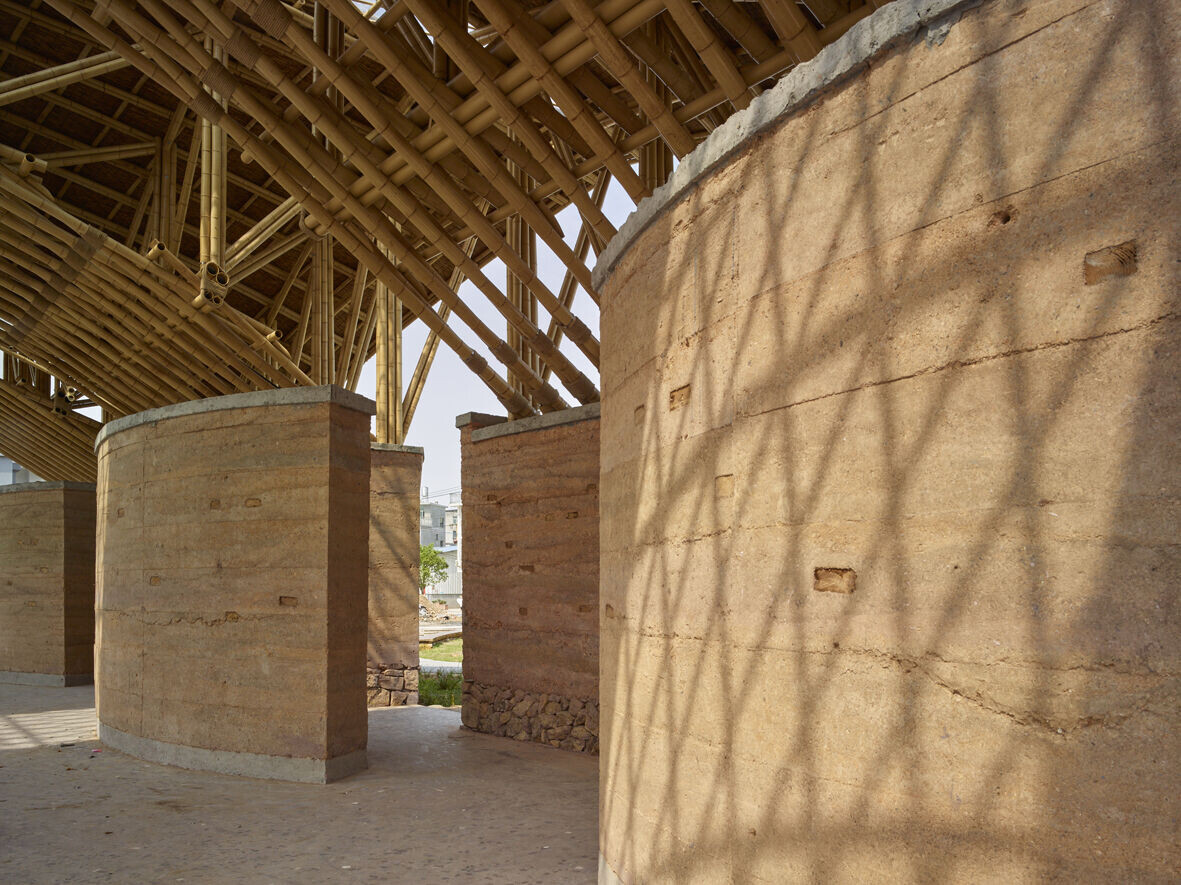

The lightness and beauty of overhanging eaves of Chinese traditional buildings were described as “looking like stretched wings of beautiful birds” in Classic of Poetry, an ancient Chinese literature classic. And in the remote Zhuguanlong Township, this sort of lightness and beauty are reflected through the innate strength of raw bamboo. As the Chinese saying goes, “Weak birds fly first”. The soaring gesture of the market, which was proposed and built for local people, aims to boost such a spirit crucial to the region’s future prosperity.
Supported by local villagers, technologies and materials, the project has maximized long-term public benefits in humanity, economy, health and education for local people with minimum environmental intervention.


Team:
Client: Zhuguanlong township government
Architect office: SUP Atelier of THAD
Lead Architect: Yehao Song, Jingfen Sun
Architects Team: Yingnan Chu,Wenwu Wang,Mengjia Liu,Xinran He,Dan Xie,Xiaojuan Chen
Lighting design: One Lighting Studio of THAD
Engineering consultation:Nan Chen
Woven Arch Bridge construction consultation:Yan Liu
Bamboo Contractors:Anji Zhujing Bamboo Industry Technology Co.,Ltd
Construction Contractor: Local Villagers
Photography: Chu Yingnan



















































